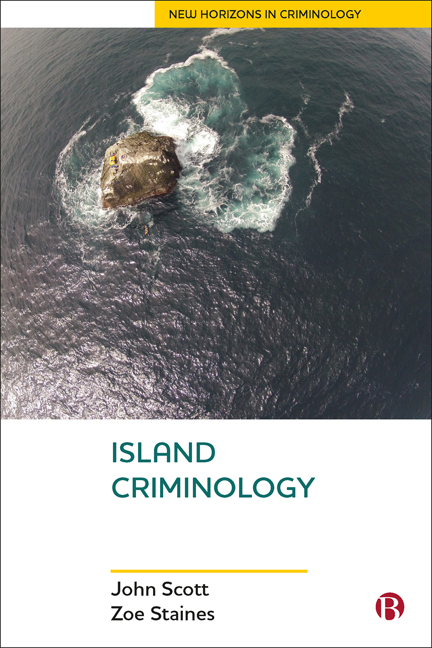4 - Invasion
Published online by Cambridge University Press: 17 January 2024
Summary
Island displacement not only physically freed up land for colonization, it also sustained the imperial project ideologically.
(Roscoe, 2021, p 183)Although isolation can protect islands and island spaces, it can also render them vulnerable to invasion by outside forces. In this chapter, we explore the concept of islands as locations that have been shaped, but also at times created, through processes of human invasion. We consider the role of colonial and neo-colonial forces in moulding the spaces and places of islands, broadening our theorizing of island spaces to incorporate islands situated on terra firma and bounded by desert. In respect of the latter, we focus primarily on the example of remote Indigenous communities scattered across Australia's sparsely populated ‘outback’ as islands in the desert. These islands have, we argue, been created and shaped as carceral reserves through ongoing colonial processes that have produced distinct crime histories and patterns. In investigating the specific case of Australia, we draw comparisons to settler colonies elsewhere, considering how invasion has worked alongside isolation (Chapter 3) to influence crime and justice practices and outcomes.
First, the chapter reflects on human invasion of islands, including through different typologies of colonialism (Feyrer & Sacerdote, 2009; Shoemaker, 2015). We then discuss the use and creation of islands as carceral spaces under Australian settler colonialism, building on themes from earlier chapters. This enables us to explore how island spaces can be created and mobilized as part of a broader array of governing techniques for dealing with deviance, which are interlinked with racialized Othering, including bordering of spaces, places, and bodies. ‘Islanding’ is in this case, we argue, co-opted as a socio-political technique to maintain and perpetuate the white settler state's legitimacy and claims over stolen Indigenous lands: what we call ‘islanding as erasure’ (building on Amoamo, 2013; and Vázquez, 2011). As a means of enabling the settler state to ‘legally dispense violence’ (Nielsen & Robyn, 2003, p 39), agents of the criminal justice system have been complicit in, and often spearheaded, this practice of creating and maintaining carceral islands in the Australian desert. This has ongoing implications for justice practices and outcomes in these locations today and demonstrates the importance of weaving together socio- political and spatial histories to enable a fuller understanding of how islands can inform criminological theorizing.
- Type
- Chapter
- Information
- Island Criminology , pp. 60 - 79Publisher: Bristol University PressPrint publication year: 2023



